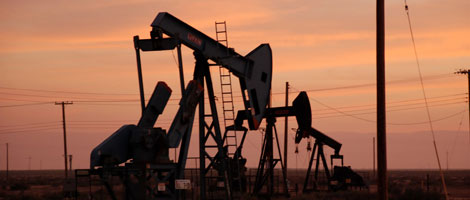Back on August 1 Pioneer Natural Resources (PXD) reported second quarter earnings of 21 cents a share, beating the Wall Street consensus by 10 cents a share. Revenue climbed 107% year over year to $1.63 billion, way ahead of the Wall Street consensus at $1.06 billion.
That day’s report, though, sent the stock tumbling. From a pre-earnings close of $163.27 the shares fell to $145.68 on August 2. Then to $129.64 on August 7. They’ve been down near that level ever since, closing at $128.06 on August 22, for example.
Why the big drop?
Some of it was a result of a relatively minor decrease in projections for 2017 production growth. The company is now calling for growth of 15% to 16% for the year. That’s at the low end of its earlier forecast of 15% to 18% growth.
Some is a result of a decision to defer drilling of some wells in the Spraberry/Wolfcamp area of the Permian Basin. Pioneer deferred 30 completions to 2018 and cut its capital spending budget.
And some of it was a forecast for greater than expected natural gas and natural gas liquids production, and lighter oil production than expected from the company’s wells. In the quarter oil made up 57% of the company’s production of 259,000 barrels of oil equivalent a day. In the first quarter oil made up 59% of production. (With natural gas prices even more depressed than oil prices, producing more oil is a good thing and producing more natural gas is a bad thing.)
Now, none of these items alone explains a $35 a share drop in the price of Pioneer stock. It’s not until you put them all together and understand that Wall Street read these results as possible, and I do only mean possible, signs that oil production at Pioneer–and at all U.S. oil shale producers–is about to peak that you can seen why the stock, along with those of other oil shale producers, has taken such a tumble.
If the slight slip in production for the year and the slight slip in oil as a percentage of total well production, and the cut back in drilling are evidence of a long term downward trend for the U.S. oil shale sector, then the market does have the right to be worried.
I frankly think the fears are overstated at this point. Production from the Spraberry/Wolfcamp formation is still growing–it was up 6% from the first quarter of 2017. Production costs continue to fall, hitting $6.19 per barrel of oil equivalent in the quarter. That’s down from $6.31 in the first quarter and $6.79 in 2016. The company did forecast that production costs will rise to an average of $7.75 to $9.75 for all of 2017. But Pioneer’s break-even cost for oil is near $20 a barrel so the company is easily profitable even with oil unable to hold above $50 a barrel.
Pioneer’s dominant position in the low-cost, high output Permian Basin makes it one of the gems of the U.S. oil shale sector. Pioneer is the largest holder of acreage in the Spraberry/Wolfcamp with 600,000 gross acres in the northern portion of the formation and 200,000 gross acres in the southern part. That’s enough to provide a resource base for decades even if oil prices struggle.
As of August 22, I’m keeping Pioneer Natural Resources in my long-term 50 Stocks portfolio. The shares are up 31.17%, even after the recent drop, since I added them to that portfolio on January 13, 2012.


